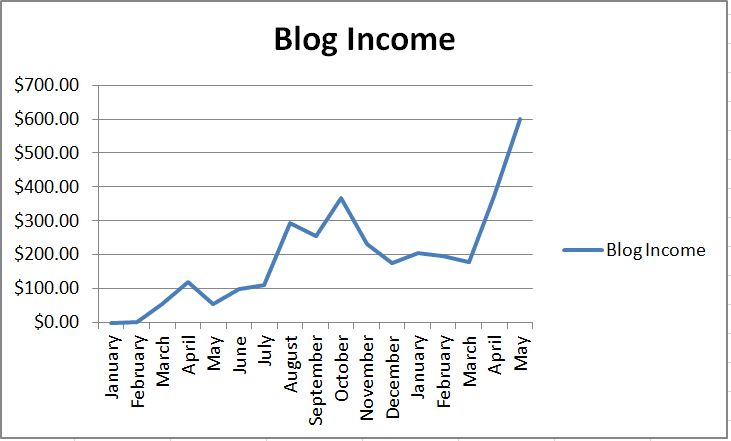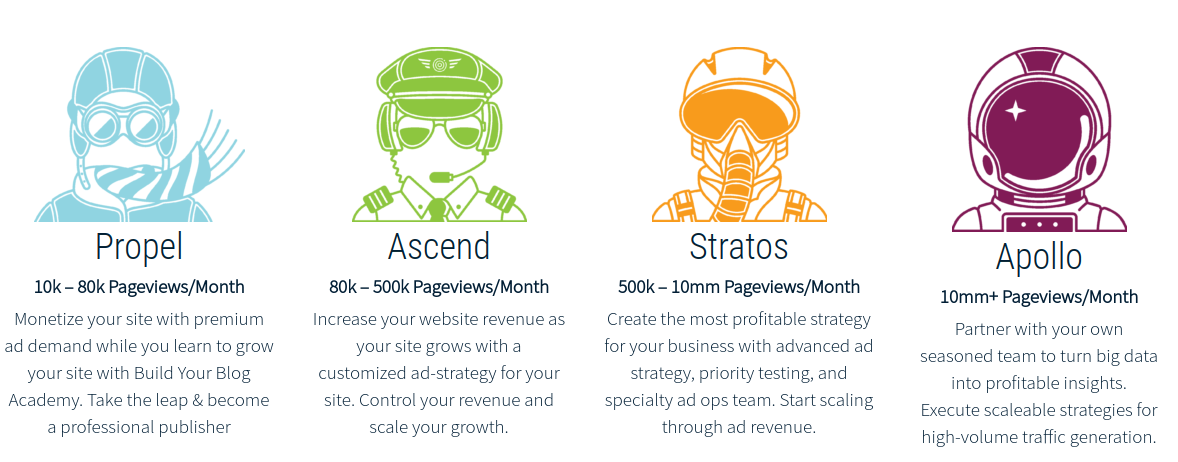The Road To A $500/Month Blog – How To Grow A Money Making Blog
One of the most popular posts I have ever written on WebMonkey was my post on The Road to a $100/Month blog.
That post was an amalgamation of everything I learned in my first 8 months of blogging, and I highly recommend starting out with that post if you are relatively new to blogging.
However, if you've been stuck in the $100-$300 range of monthly blogging income like I have been for the past few months, I hope that this post will provide some insight into how I managed to get over the hump and continue to grow.
Let's get to it!
Current Blog Traffic – Growth, Stagnation & More SEO:
I've always focused on growing organic traffic as a means to generate revenue on this blog.
While Google's landing page environment is changing and pushing organic search results lower than ever before, the point remains: quality content that provides an incredible user experience is key.
Since writing my $100/month blog post, most of my time has still been dedicated to content creation.
Back then, I had written a total of 34 posts and roughly 93,000 words. Since then, I have written an additional 39 posts and essentially doubled the total word count on WebMonkey.
Here is how my traffic has broken down:
Between a mix of algorithm updates that both benefited and hindered my position in the SERPs, I experienced a fair amount of traffic fluctuation since August.
However, with the exception of January (my best month ever), I've struggled to generate the same sort of monthly traffic as I did in August.
Solid content, some basic SEO, and obtaining new backlinks has kept organic traffic numbers fairly steady, but it is clear that things will have to change moving forwards.
However, while things have been fairly stagnant/the same in the traffic generation department, I've made some major changes in how I make money by blogging, and this will hopefully open up opportunities to grow WebMonkey at an even faster rate.
Making Money With A Blog – How I Ramped Up Revenue:
I've always relied on Adsense to generate most of my blogging income, with affiliate income, sponsored posts, or other revenue streams mostly taking a back seat.
If you've read my Yearly Blog Recap or latest Quarterly Income Report, you'll see the formula has been fairly consistent…make $100-$150/month from Adsense, and maybe make another $50-$100 in affiliate income from random links on my blog on a good month.
This was a great strategy for monetizing a fresh blog, but after doing some reading/thinking I decided to really step things up in the income department.
The main changes I made over the past 2 months include:
- Switching from Google Adsense to Monumetric, another advertisement management platform for publishers.
- Selling my first sponsored post.
- Investing back into the blog.
Here are the results:
April saw approximately $372 in revenue, and May is on track to easily do $600 or more.
Time to break down the changes!
1 – Switching From Adsense to Monumetric:
At the start of April, I decided to start the process to move from Adsense to Monumetric (formerly The Blogger Network) with hopes of increasing my blog advertising revenue. I plan on writing a more in-depth Monumetric review in a week or two that breaks down the platform in greater detail, but I'll briefly discuss Monumetric right now.
Monumetric is an advertisement management platform. This means that publishers who are part of Monumetric can focus on content creation and marketing while things like advertisement layout, split-testing, optimization, and reporting are all taken care of.
Monumetric naturally takes a cut of any ad revenue, like all other ad management platforms, but the commission ranges from 15-30% which is low for the industry.
Anyway, here are the available tiers publishers can apply for in the Monumetric network:
Each monetization program has varying requirements, and publishers with more monthly pageviews obviously get more support and are prioritized.
However, even the Propel Network (which I have joined) has provided an exceptional on-boarding and supportive experience, and the RPMs I am seeing have absolutely crushed Adsense.
On Adsense, I was seeing page RPMs of about $10 on a good day, and despite my split-testing efforts, I really had no idea what I was doing.
Here are my results with Monumetric after less than 30 days:
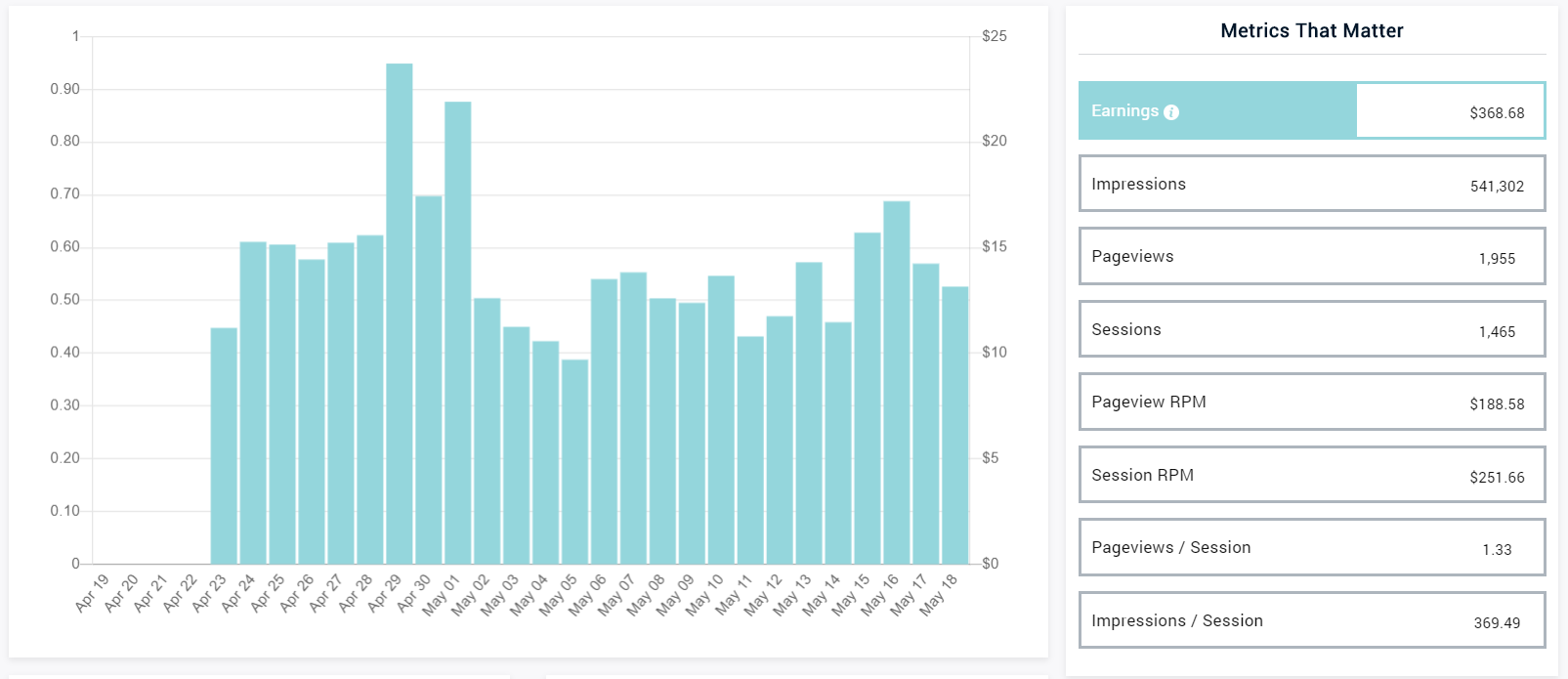
There are a few reasons Monumetric is performing much better than Adsense:
- Monumetric utilizes a bidding system to try and fill all your ad units at the highest rates possible – this is critical!
- Monumetric uses a PPV (pay-per-view) system, not a PPC (pay-per-click) system.
- The Monumetric Support Team handles all ad placement optimization, with input/feedback from the publisher.
I firmly believe that a strong advertising backbone is essential for growing a small-medium blog, and I finally feel as if I have this foundation with Monumetric.
Other bloggers looking to grow their revenue and online presence should consider networks like Monumetric, Mediavine, or other premium ad networks. The reason is quite simple: these networks provide some relative stability in your earnings.
Adsense is great for beginner blogs, but the PPC model and fact that you are responsible for your own optimization tends to make earnings more volatile.
In contrast, with a PPV model, I'm relatively certain I can squeeze out around $15/day with Monuetric ads.
While the Propel Program has a $99 setup fee and Monumetric pays out on net-60 terms, I can now forecast my earnings more accurately, and this has allowed me to confidently invest resources back into WebMonkey (more on this later).
If you have reached the 10,000 monthly session threshold, I highly suggest giving Monumetric a try!
2 – Selling A Sponsored Post:
If you've kept up with WebMonkey, you probably noticed that I had a sponsored post published recently that broke down 5 Alternatives to Google Adsense.
This was the first sponsored post I ever published, and while I don't recommend bloggers make a habit of publishing sponsored posts, here are a few reasons why I decided to do it:
- The post is very high in quality, in my opinion, which is surprisingly hard to find in the world of sponsored posts.
- The content fits perfectly with WebMonkey since I frequently blog about how bloggers can make more money.
- I was able to mark the post with a rel=canonical tag to signal the original article source to Google and I could make the links nofollow.
This last part is crucial for publishing a sponsored post, in my eyes.
Adding a rel=canonical tag ensures that my blog cannot be penalized for duplicate content since it points to the original source. Additionally, having nofollow links means the article isn't passing any link juice to the various websites mentioned in the post, so it isn't really a case of selling backlinks.
Again, this is a somewhat gray area in the eyes of Google, but it was cool to create a new revenue stream for WebMonkey (even if it rarely happens).
3 – Investing Back Into My Blog:
For the longest time, I have been very hesitant to spend any of my profits on WebMonkey.
However, I'm finally starting to see the wisdom behind the the saying “it takes money to make money.”
Don't get me wrong: I still argue that novice bloggers should minimize cost until they have a solid foundation of organic traffic.
But, for a blog making 100-300$/month in profit, I think funneling some money back into growth actually makes a lot of sense.
So, what have I been spending my money on?
Faster WordPress Hosting:
Well, one of the first things I decided to do was to upgrade my SiteGround web hosting plan to their mid-tier hosting plan, which gave me access to Premium WordPress features like the SiteGround SuperCacher and automatic backups.
Website speed is a major ranking factor, and having something in place like the SiteGround SuperCacher helps make my website faster by caching all static content on my site (i.e. CSS files, Javascript, images).
Basically, when users visit my blog, cached content is served to them rather and server calls are avoided, and this helps cut down on page load times quite significantly.
SiteGround's GrowBig plan is $19.95/month versus the $11.95/month of their StartUp plan, but this is absolutely worth it for a blog generating thousands of views a month.
You can read more about why I chose SiteGround hosting, but regardless of your hosting provider, don't be afraid to spend more money on speed!
Tailwind for Pinterest Marketing:
I decided to purchase Tailwind, a Pinterest scheduling/marketing tool back in January, for around $250 (which includes some add-ons as well as the yearly fee).
My marketing efforts have seen some benefit, and while I'm still seeing inconsistent results from Pinterest, I'm at least getting 10-50 visitors per day onto my website:
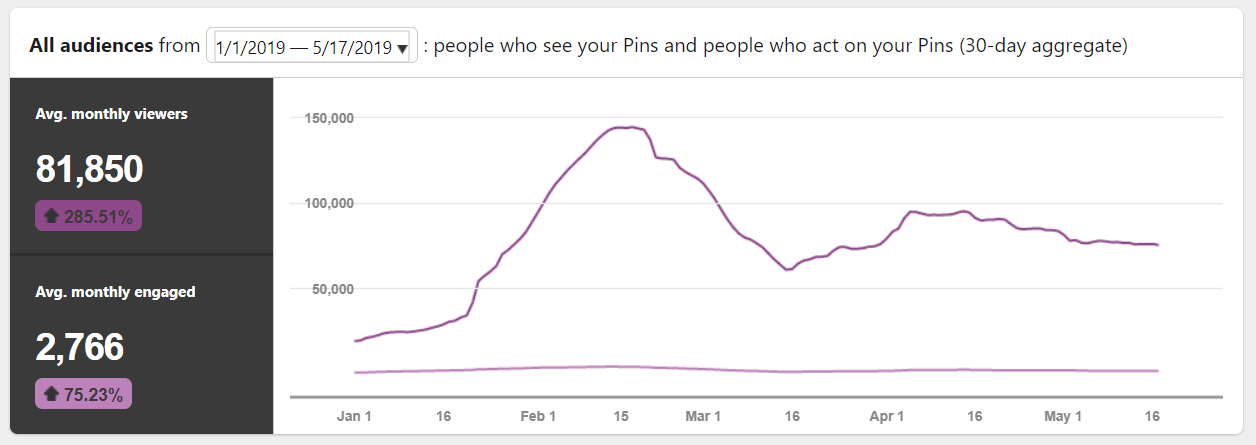
You can read more about why I bought Tailwind in my Tailwind App Review, but I think it was a good decision because it is slowly helping me to diversify my traffic sources.
Don't get me wrong, organic traffic is awesome.
However, after being hit by a few Google algorithm updates I realize the importance of diversity. Plus, Pinterest is a great traffic driver for so many other bloggers, so I wanted to get in on a slice of the pie.
I'm still not quite sure of how to maximize my Pinterest marketing efforts, and my Tailwind work is still taking up 15-30 minutes a day, so this brings me to the final way I have invested money into growing WebMonkey.
Hiring A Pinterest Virtual Assistant:
My friend Peter from Dollar Sanity actually recommend I look into hiring a VA to help with Pinterest growth and time management, and I couldn't happier that he did.
I decided to hire a Pinterest VA from Upwork two weeks ago, and there are a few reasons I decided to go through Upwork:
- Upwork makes payment processing, security, and communication very easy.
- It is easy to find reputable virtual assistants on Upwork who have plenty of experience and screenshots of their work/a portfolio.
- You can find Pinterest VA's who work for between $4.50-$10/hour (and they delivery decent work).
- A fellow blogger of mine actually uses the same virtual assistant I am working with, so I already know the quality of work.
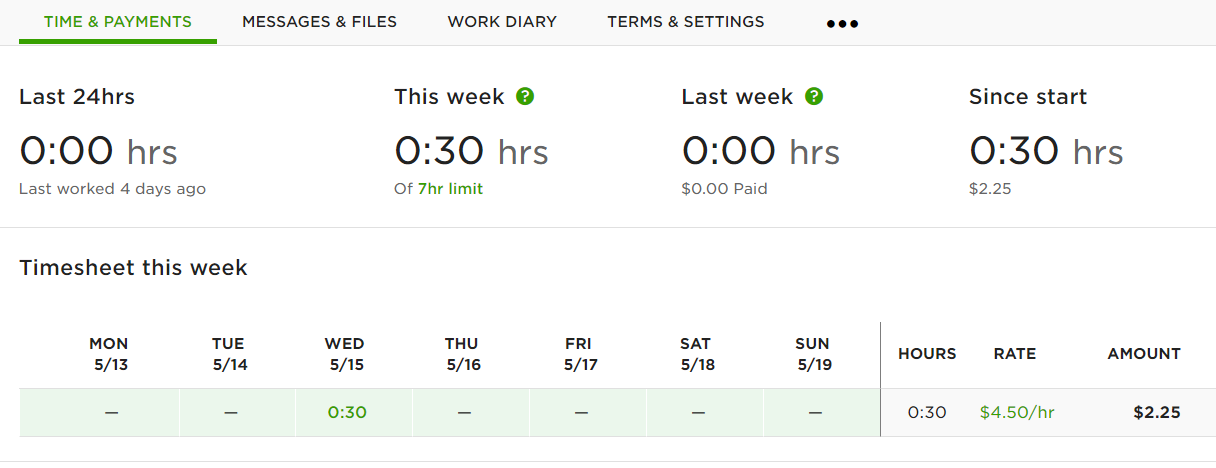
This last part is quite crucial in hiring the right VA, if you ask me.
I've had friends hire very cheap Pinterest VAs in the past, only to find the VA ripping off other people's graphics and spam-posting to get fast (but not sustainable) results.
I'll now be spending about $150/month for Pinterest marketing, but this basically takes all of the work off of my plate and the VA I am working with is very skilled. Money well spent, and Monumetric revenue can cover the cost!
If you know someone who is using a reputable VA and want to invest into blog marketing, this might not be a bad route to take.
Just make sure you know what you're paying for, and if your advertisement/affiliate revenue can keep up with your costs. I know I will incur a loss for the first few months by paying a VA to grow my Pinterest traffic, but I'm hoping to eventually drive a few thousand people a month via Pinterest, which can end up generating a profit.
The $500 Blogging Mark – Some Final Thoughts & Tips:
Looking back, not much has changed in my current blogging approach from when I was only making 50-$100 a month to now.
I still focus on content creation, gaining new backlinks/SEO, and networking. These are the critical elements to running a successful blog.
However, earning $500/month compared to a hundred bucks actually makes a massive difference in terms of how fast you can start growing your business, and this is why I encourage bloggers to take the leap and apply to new advertising networks.
You only have so many hours in a day, so gaining the ability to outsource tasks like marketing (or even content, if you find a skilled writer) is incredibly valuable because it lets you focus on what matters most.
You can't do every job under the sun with limited hours, so it is crucial to view the blog as a business. As a business owner, you shouldn't be afraid of putting in crazy work hours, but you should always keep your eye on the bigger picture as you scale.
I love writing content and social media marketing, but I also have aspirations to outsource more work as WebMonkey grows to keep the ball rolling.
I'll probably always write content because it's my favorite part of blogging, even if it's at a slower rate, but I definitely hope to outsource most of my marketing and backlinking endeavors so I can focus on networking and taking on new projects down the line.
Just remember to be smart; spending hundreds of dollars on VAs, marketing software, outsourcing, and website hosting won't matter if you don't have a firm base of organic traffic and monetization methods already in place.
However, don't be afraid to invest back into your business or dream about how to take things to the next level.
My Road to $100/Month post was the starting point for how you can make money with a blog.
In contrast, a $500/month blog is hopefully the launch pad for where real, sustainable growth can start taking place. Hopefully I see you all with a Road to $1,000/Month Blog in just a few months 😛
Catch you guys in the next post!
Tom




